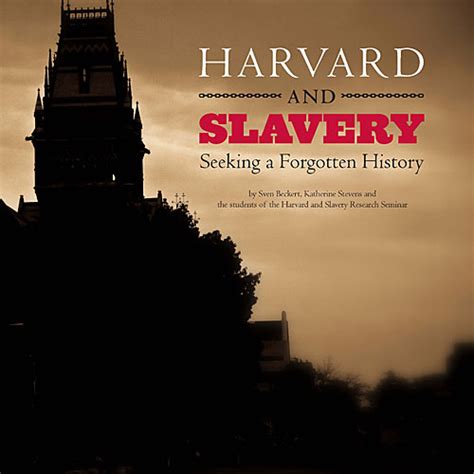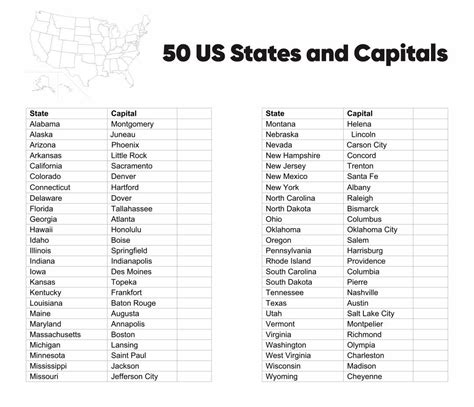
A researcher hired by Harvard University to investigate its historical ties to slavery alleges she was dismissed after presenting findings that implicated the university more deeply than it was willing to acknowledge.
Christina Sharpe, a renowned scholar of Black studies, claims her research revealed that Harvard not only benefited from slavery but also actively participated in and perpetuated the institution. Sharpe’s dismissal, detailed in a recent essay, has ignited a debate about academic freedom, institutional accountability, and the complexities of confronting historical injustices. Harvard denies Sharpe’s claims, stating her temporary position concluded as scheduled.
Sharpe, a professor at York University in Toronto, was brought to Harvard in 2022 as a visiting professor to contribute to the university’s ongoing efforts to reckon with its past. Harvard had previously released a comprehensive report acknowledging its deep connections to slavery, including financial benefits derived from the slave trade and the exploitation of enslaved people. However, Sharpe contends that her research uncovered even more direct and active involvement by Harvard in the perpetuation of slavery.
In her essay, Sharpe writes that her research took her beyond the already-acknowledged financial connections, revealing evidence of Harvard faculty and administrators directly involved in managing plantations, trading enslaved people, and advocating for the expansion of slavery. She argues that this level of complicity suggests a more profound and systemic entanglement than Harvard has publicly admitted.
“What I found was not just that Harvard benefited from slavery, but that Harvard was slavery,” Sharpe wrote. “The university itself, its faculty, its administrators, were actively involved in the day-to-day operations of the slave system.”
Sharpe’s research included examining archival documents, letters, and financial records that detailed the personal investments and activities of Harvard figures. She found evidence of Harvard presidents owning enslaved people, professors using enslaved labor to maintain their households, and the university itself accepting donations derived directly from the sale of enslaved people.
According to Sharpe, her findings were met with resistance from some members of the Harvard administration. She claims that her research was scrutinized more heavily than other projects, and that she faced pressure to downplay the extent of Harvard’s involvement. Ultimately, she says, her contract was not renewed, effectively ending her research at Harvard.
Harvard spokesperson Jonathan Swain issued a statement refuting Sharpe’s claims, stating, “Professor Sharpe was appointed as a Visiting Professor for a fixed term, which concluded as planned. All visiting faculty are aware of the terms of their appointments. The Committee on Harvard and the Legacy of Slavery continues its important work, guided by its commitment to truth-telling and restorative justice.”
The controversy surrounding Sharpe’s dismissal has resonated throughout the academic community, with many scholars expressing concern about the potential chilling effect on research into sensitive topics. Some argue that Harvard’s actions send a message that the university is not truly committed to confronting its past, and that it is more interested in managing its reputation than in uncovering the full truth.
Others, however, defend Harvard’s handling of the situation, arguing that the university has already taken significant steps to acknowledge its ties to slavery and to address the legacy of that history. They point to the university’s ongoing research projects, its financial commitments to supporting descendant communities, and its efforts to diversify its faculty and student body as evidence of its commitment to restorative justice.
The debate highlights the complexities of grappling with historical injustices and the challenges of balancing academic freedom with institutional accountability. As universities across the country continue to confront their own histories of complicity with slavery and other forms of oppression, the case of Christina Sharpe at Harvard serves as a cautionary tale about the potential for conflict between researchers and institutions, and the importance of transparency and open dialogue in the pursuit of truth.
The accusations raise questions about the extent to which universities are willing to fully confront their historical ties to slavery, particularly when those ties implicate the institution in direct and active participation. The case also underscores the importance of protecting academic freedom and ensuring that researchers are able to pursue their work without fear of reprisal.
The specifics of Sharpe’s findings are yet to be fully publicized, adding another layer of complexity to the controversy. While she has shared some details in her essay and in interviews, she has not yet published a comprehensive account of her research. This has led to calls for Harvard to release all of the documents and data related to Sharpe’s project, so that the public can assess the validity of her claims.
The incident also brings into focus the role of universities in shaping public discourse about race and history. As institutions of higher learning, universities have a responsibility to promote critical thinking and to foster open and honest dialogue about difficult topics. However, they also have a vested interest in protecting their reputations and maintaining positive relationships with donors, alumni, and other stakeholders.
Finding the right balance between these competing interests is a challenge that all universities face as they grapple with their historical legacies. The case of Christina Sharpe at Harvard underscores the importance of approaching this challenge with transparency, integrity, and a genuine commitment to truth-telling.
The controversy surrounding Sharpe’s departure also raises broader questions about the nature of historical research and the role of the researcher. Historians are often tasked with uncovering uncomfortable truths and challenging established narratives. This can be a difficult and sometimes dangerous task, particularly when the research involves powerful institutions or individuals.
It is essential that historians are given the freedom and support they need to pursue their work without fear of censorship or reprisal. Universities and other institutions must create an environment that encourages open inquiry and critical thinking, even when the results of that inquiry may be unsettling or controversial.
The case of Christina Sharpe at Harvard is a reminder that the pursuit of historical truth is not always easy or straightforward. It requires courage, persistence, and a willingness to challenge conventional wisdom. It also requires institutions to be willing to confront their own pasts, no matter how uncomfortable those pasts may be.
The long-term impact of this controversy remains to be seen. It is possible that it will lead to further scrutiny of Harvard’s historical ties to slavery, and that it will prompt other universities to take a closer look at their own pasts. It is also possible that it will have a chilling effect on research into sensitive topics, as scholars become more hesitant to challenge established narratives or to question the actions of powerful institutions.
Ultimately, the case of Christina Sharpe at Harvard is a reminder that the struggle for racial justice and historical truth is an ongoing process, and that it requires the active participation of individuals, institutions, and communities.
The Harvard and Slavery report, released in 2022, was a culmination of years of research and investigation into the university’s connections to the institution of slavery. The report acknowledged that Harvard had benefited financially from slavery and that many of its early leaders and benefactors had been slaveholders or had profited from the slave trade.
The report also detailed the ways in which Harvard had perpetuated racist ideologies and discriminatory practices, both during and after the era of slavery. These included the exclusion of Black students from the university, the promotion of scientific racism, and the failure to address the legacy of slavery in its curriculum and institutional culture.
The Harvard and Slavery report was widely praised for its thoroughness and its willingness to confront the university’s uncomfortable past. However, it also faced criticism from some quarters, with some arguing that it did not go far enough in acknowledging the extent of Harvard’s complicity in slavery or in proposing concrete measures to address the legacy of that history.
The controversy surrounding Christina Sharpe’s departure from Harvard raises questions about whether the university is truly committed to implementing the recommendations of the Harvard and Slavery report, and whether it is willing to allow researchers to pursue lines of inquiry that may challenge the university’s official narrative.
The incident also highlights the importance of ongoing dialogue and engagement with descendant communities in the process of reckoning with historical injustices. Descendant communities have a unique perspective on the legacy of slavery and other forms of oppression, and their voices must be central to any effort to address these issues.
Harvard has made some efforts to engage with descendant communities, including establishing a fund to support initiatives that benefit these communities. However, some critics argue that these efforts are not sufficient, and that the university needs to do more to listen to and learn from descendant communities.
The case of Christina Sharpe at Harvard is a complex and multifaceted issue with no easy answers. It raises important questions about academic freedom, institutional accountability, and the challenges of confronting historical injustices. As the debate continues to unfold, it is essential that all parties involved approach the issue with transparency, integrity, and a genuine commitment to truth-telling.
The investigation into Harvard’s slavery past began long before the 2022 report. Student activism and independent research prompted the university to seriously consider its deep-seated historical entanglement. The early investigations were often met with resistance from within the institution, mirroring, in some ways, Sharpe’s allegations. It’s a reminder that institutional change and the confronting of uncomfortable histories often require persistent pressure and independent scrutiny.
The specifics of Sharpe’s research, if released, could provide a more nuanced understanding of the individual and institutional roles played in the perpetuation of slavery. It could reveal the extent to which Harvard faculty and administrators were actively involved in the economic and social systems that supported slavery, not just beneficiaries of it. This level of detail is crucial for a complete understanding of the university’s history and for developing meaningful strategies for restorative justice.
The accusations also shed light on the power dynamics inherent in academic institutions. Visiting professors, often brought in for their expertise and fresh perspectives, may find themselves in a precarious position if their research challenges the established narratives of the institution they are temporarily affiliated with. This dynamic raises concerns about the protection of academic freedom and the ability of researchers to conduct independent and critical inquiry without fear of professional repercussions.
Harvard’s response to Sharpe’s claims—that her temporary appointment concluded as planned—further fuels the controversy. Critics argue that this response is dismissive and fails to address the substance of her allegations. It also raises questions about the university’s commitment to transparency and accountability. A more proactive and engaged response, including a public discussion of Sharpe’s findings and a commitment to further investigation, could have helped to mitigate the damage and demonstrate a genuine commitment to confronting the university’s past.
The silence surrounding the specific details of Sharpe’s research also creates an environment ripe for speculation and misinformation. Without access to the data and analysis that support her claims, it is difficult for the public to assess the validity of her allegations. This lack of transparency undermines the credibility of both Sharpe and Harvard, and it hinders the ability to have a productive and informed discussion about the university’s historical ties to slavery.
The Harvard case serves as a crucial reminder that the process of historical reckoning is not a one-time event but an ongoing process. It requires continuous research, critical reflection, and a willingness to confront uncomfortable truths. It also demands a commitment to transparency, accountability, and restorative justice. Universities and other institutions must create an environment that encourages open inquiry and critical thinking, even when the results of that inquiry may be unsettling or controversial. Only then can they truly begin to address the legacy of slavery and other forms of oppression.
The impact on Harvard’s reputation following these allegations remains to be seen. The university has long been considered a leading institution of higher learning, and any accusations of historical complicity in slavery can damage its standing. The way Harvard handles this situation will be critical in determining whether it can maintain its reputation as a place of academic excellence and integrity.
Furthermore, the events surrounding Christina Sharpe’s research and departure may influence future research endeavors related to slavery and racial injustice within academic circles. Researchers may become more cautious when approaching such sensitive topics, or they may be more selective about the institutions with which they choose to affiliate. This could ultimately hinder the progress of historical research and limit our understanding of the complex legacy of slavery.
In conclusion, the controversy surrounding Christina Sharpe’s allegations against Harvard University brings to light the intricate challenges institutions face when confronting their historical ties to slavery. The issues of academic freedom, institutional accountability, and the importance of transparency are paramount. Harvard’s response to Sharpe’s claims, along with the broader implications for historical research and the pursuit of racial justice, call for a comprehensive and sustained commitment to truth-telling and restorative justice.
Frequently Asked Questions (FAQ):
1. What are Christina Sharpe’s main allegations against Harvard University?
Christina Sharpe alleges that Harvard University was not only a beneficiary of slavery but was actively involved in its perpetuation. She claims her research revealed that Harvard faculty and administrators were directly involved in managing plantations, trading enslaved people, and advocating for the expansion of slavery, suggesting a more profound and systemic entanglement than Harvard has publicly admitted. She contends she was dismissed after her findings challenged the university’s preferred narrative.
2. What is Harvard University’s response to Sharpe’s allegations?
Harvard University denies Sharpe’s claims. A spokesperson stated that Sharpe was appointed as a Visiting Professor for a fixed term, which concluded as planned, and that all visiting faculty are aware of the terms of their appointments. The university maintains that the Committee on Harvard and the Legacy of Slavery continues its important work, guided by its commitment to truth-telling and restorative justice.
3. What was the purpose of Harvard’s “Harvard and Slavery” report, and what did it conclude?
The “Harvard and Slavery” report, released in 2022, was the culmination of years of research into the university’s connections to the institution of slavery. It acknowledged that Harvard had benefited financially from slavery, and that many of its early leaders and benefactors had been slaveholders or had profited from the slave trade. The report also detailed how Harvard had perpetuated racist ideologies and discriminatory practices.
4. What are the potential implications of this controversy for academic freedom and historical research?
The controversy raises concerns about the potential chilling effect on research into sensitive topics. Some scholars worry that Harvard’s actions could send a message that the university is not truly committed to confronting its past, and that it is more interested in managing its reputation than in uncovering the full truth. This could make researchers more hesitant to challenge established narratives or to question the actions of powerful institutions. It also underscores the importance of protecting academic freedom and ensuring researchers can pursue their work without fear of reprisal.
5. What actions has Harvard taken to address its historical ties to slavery, and are they considered sufficient?
Harvard has undertaken research projects, made financial commitments to supporting descendant communities, and implemented efforts to diversify its faculty and student body. While some view these actions as significant steps towards acknowledging its past and addressing the legacy of slavery, others argue that they are not sufficient. Critics contend that Harvard needs to do more to listen to and learn from descendant communities and that the university needs to be more transparent about its historical ties to slavery. There is also the question of whether Harvard has taken enough steps to implement the recommendations that followed the “Harvard and Slavery” report.









